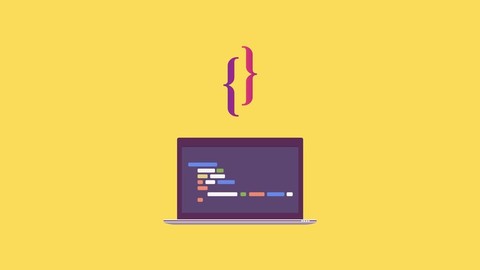
Object Oriented Programming for beginners – Using Python
Object Oriented Programming for beginners – Using Python, available at $44.99, has an average rating of 4.35, with 28 lectures, based on 586 reviews, and has 59902 subscribers.
You will learn about How to create a class How to instantiate a class How to modify a class Inheritance Polymorphism Encapsulation Abstraction This course is ideal for individuals who are Beginners to Python or Beginners to Programming or Beginners to Web Development It is particularly useful for Beginners to Python or Beginners to Programming or Beginners to Web Development.
Enroll now: Object Oriented Programming for beginners – Using Python
Summary
Title: Object Oriented Programming for beginners – Using Python
Price: $44.99
Average Rating: 4.35
Number of Lectures: 28
Number of Published Lectures: 28
Number of Curriculum Items: 28
Number of Published Curriculum Objects: 28
Original Price: $19.99
Quality Status: approved
Status: Live
What You Will Learn
- How to create a class
- How to instantiate a class
- How to modify a class
- Inheritance
- Polymorphism
- Encapsulation
- Abstraction
Who Should Attend
- Beginners to Python
- Beginners to Programming
- Beginners to Web Development
Target Audiences
- Beginners to Python
- Beginners to Programming
- Beginners to Web Development
Object-oriented Programming, or OOP for short, is a programming paradigm which provides a means of structuring programs so that properties and behaviors are bundled into individual objects.
For instance, an object could represent a person with a name property, age, address, etc., with behaviors like walking, talking, breathing, and running. Or an email with properties like recipient list, subject, body, etc., and behaviors like adding attachments and sending.
Put another way, object-oriented programming is an approach for modeling concrete, real-world things like cars as well as relations between things like companies and employees, students and teachers, etc. OOP models real-world entities as software objects, which have some data associated with them and can perform certain functions.
Object-oriented programming is based on the imperative programming paradigm, which uses statements to change a program’s state. It focuses on describing how a program should operate.
OOP uses the concept of objects and classes. A class can be thought of as a ‘blueprint’ for objects. These can have their own attributes (characteristics they possess), and methods (actions they perform).
In this course you will learn the key concepts of object oriented programming which includes:
-
Classes
-
Methods
-
Instantiating
-
Inheritance
-
Polymorphism
-
Encapsulation
-
Abstraction
Course Curriculum
Chapter 1: Installation and Setups
Lecture 1: Introduction
Lecture 2: What is Python
Lecture 3: Installing Python on Windows
Lecture 4: Installing Python on Macs
Lecture 5: Installing Pycharm on Windows
Lecture 6: Installing Pycharm on Macs
Lecture 7: Changing theme in Pycharm
Lecture 8: Pycharm configuration on Windows – Part 1
Lecture 9: Pycharm configuration on Windows – Part 2
Lecture 10: Pycharm configuration on Macs
Chapter 2: Introduction to Object Oriented Programming – OOP
Lecture 1: What is OOP ?
Lecture 2: Creating a class
Lecture 3: Instantiating a class
Lecture 4: Modifying a class
Lecture 5: Class and instance variables
Lecture 6: Inheritance – Part 1
Lecture 7: Inheritance – Part 2
Lecture 8: Inheritance – Part 3
Lecture 9: Inheritance – Part 4
Lecture 10: Polymorphism – Part 1
Lecture 11: Polymorphism – Part 2
Lecture 12: Polymorphism – Part 3
Lecture 13: Encapsulation – Part 1
Lecture 14: Encapsulation – Part 2
Lecture 15: Encapsulation – Part 3
Lecture 16: Abstraction – Part 1
Lecture 17: Abstraction – Part 2
Lecture 18: Thank You
Instructors
-
Bluelime Learning Solutions
Making Learning Simple
Rating Distribution
- 1 stars: 9 votes
- 2 stars: 19 votes
- 3 stars: 106 votes
- 4 stars: 222 votes
- 5 stars: 230 votes
Frequently Asked Questions
How long do I have access to the course materials?
You can view and review the lecture materials indefinitely, like an on-demand channel.
Can I take my courses with me wherever I go?
Definitely! If you have an internet connection, courses on Udemy are available on any device at any time. If you don’t have an internet connection, some instructors also let their students download course lectures. That’s up to the instructor though, so make sure you get on their good side!
You may also like
- Top 10 Video Editing Courses to Learn in November 2024
- Top 10 Music Production Courses to Learn in November 2024
- Top 10 Animation Courses to Learn in November 2024
- Top 10 Digital Illustration Courses to Learn in November 2024
- Top 10 Renewable Energy Courses to Learn in November 2024
- Top 10 Sustainable Living Courses to Learn in November 2024
- Top 10 Ethical AI Courses to Learn in November 2024
- Top 10 Cybersecurity Fundamentals Courses to Learn in November 2024
- Top 10 Smart Home Technology Courses to Learn in November 2024
- Top 10 Holistic Health Courses to Learn in November 2024
- Top 10 Nutrition And Diet Planning Courses to Learn in November 2024
- Top 10 Yoga Instruction Courses to Learn in November 2024
- Top 10 Stress Management Courses to Learn in November 2024
- Top 10 Mindfulness Meditation Courses to Learn in November 2024
- Top 10 Life Coaching Courses to Learn in November 2024
- Top 10 Career Development Courses to Learn in November 2024
- Top 10 Relationship Building Courses to Learn in November 2024
- Top 10 Parenting Skills Courses to Learn in November 2024
- Top 10 Home Improvement Courses to Learn in November 2024
- Top 10 Gardening Courses to Learn in November 2024





















